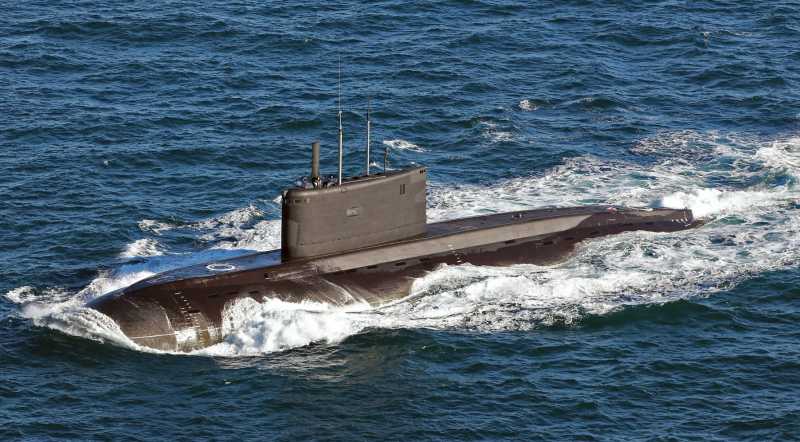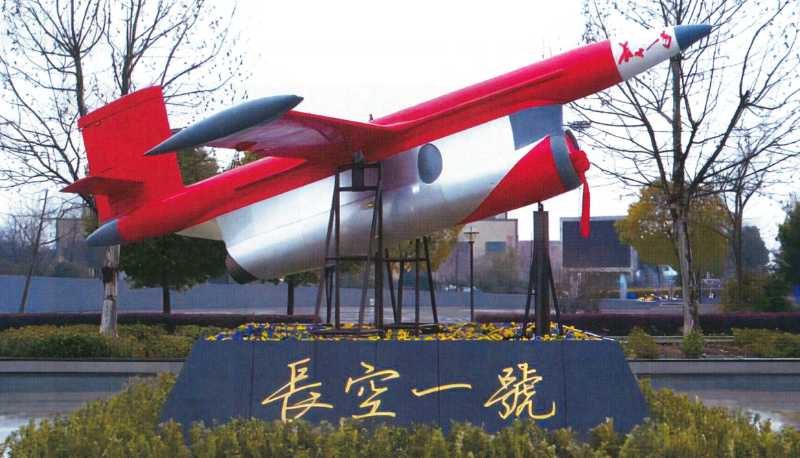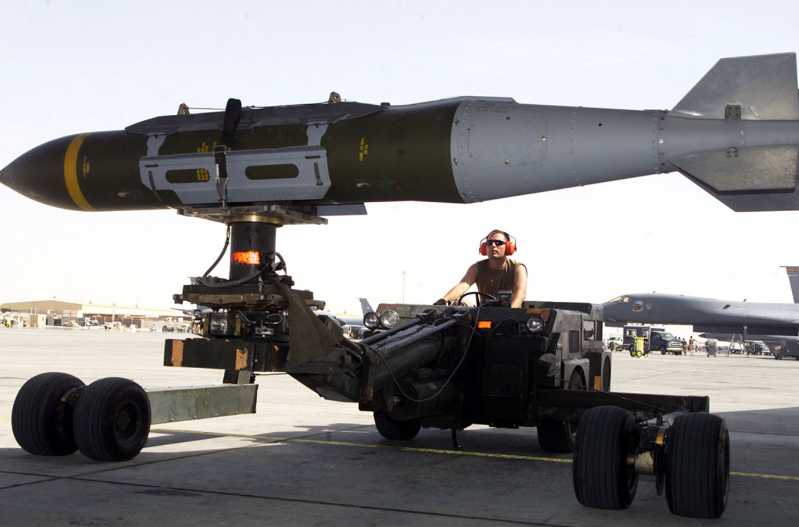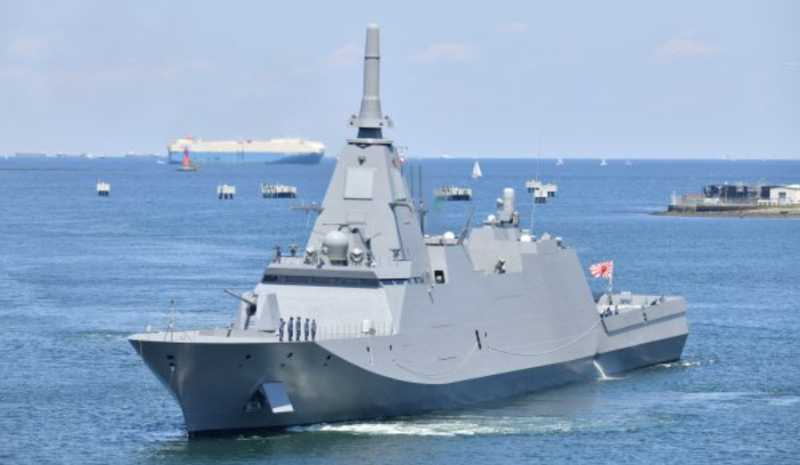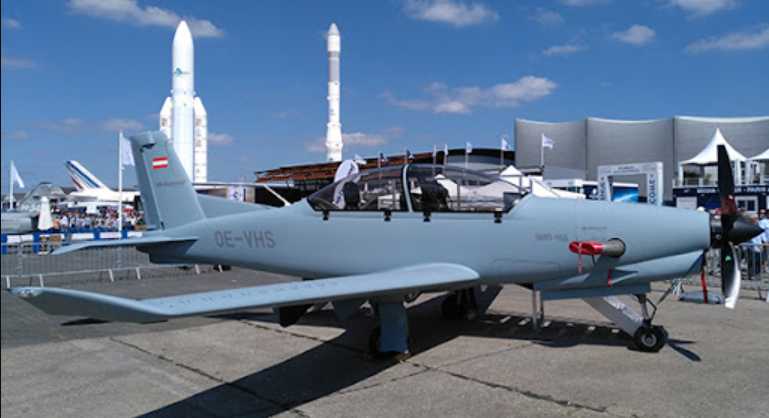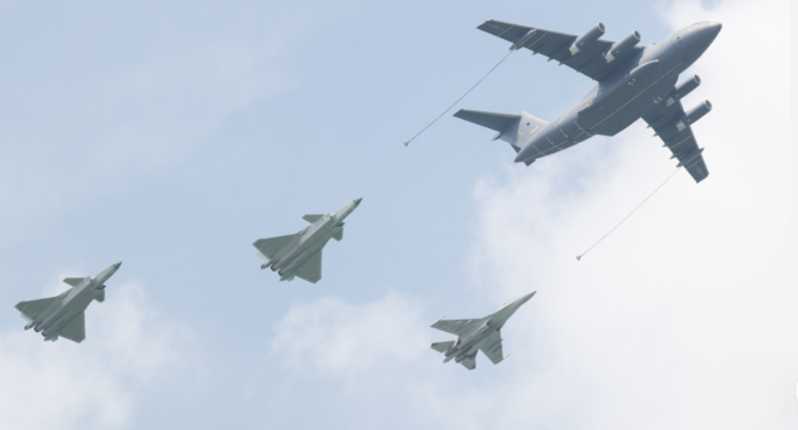With the development and application of information technology, precision-guided weapons have emerged. Their high-efficiency attack on targets is like hitting wherever you point, and every bullet hits the target. Precision-guided weapons are similar to unmanned aerial vehicles. Their uniqueness comes from the two key elements of "control" and "guidance". "Control" means control, which can reduce flight deviations with the guidance system, and "guidance" means guidance, which is like a guide to find, lock, and guide guided weapons to fly to the target, and finally achieve a one-hit-kill combat effect.
What are precision-guided weapons
Precision-guided weapons generally refer to missiles, guided artillery shells, and guided bombs with a very high hit rate on point targets such as tanks, armored vehicles, long aircraft, warships, radars, bridges, and command centers within the range.
Although the concept of precision-guided weapons was formed in the mid-1970s, guided weapons had already shown their potential during World War II, but due to technical limitations, their combat effectiveness was not fully reflected. Until the late 1950s, the technological innovation of small rocket engines and guidance systems led to the gradual emergence of various guided weapons, with greatly improved accuracy compared with the past. With the breakthrough in the field of microelectronics and computers in the late 1970s, precision-guided weapons achieved a qualitative leap, and were highly favored in several local wars.
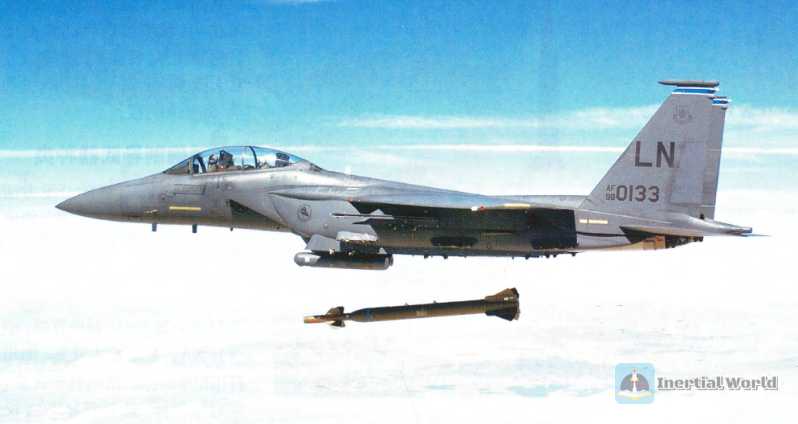
In the Gulf War in 1991, although the use rate of precision-guided weapons was only 9%, they paralyzed Iraq’s combat system with their good "acupoint" effect, and were the protagonists on the battlefield. Since then, precision-guided technology has been increasingly widely adopted, becoming the mainstream development trend of modernization and precision of weapon systems.
At present, many countries have included precision-guided weapons in the focus of conventional weapons research and development, invested heavily, equipped them on a large scale, and are ready to use them on all possible battlefields. Modern precision-guided weapons have the following basic characteristics:
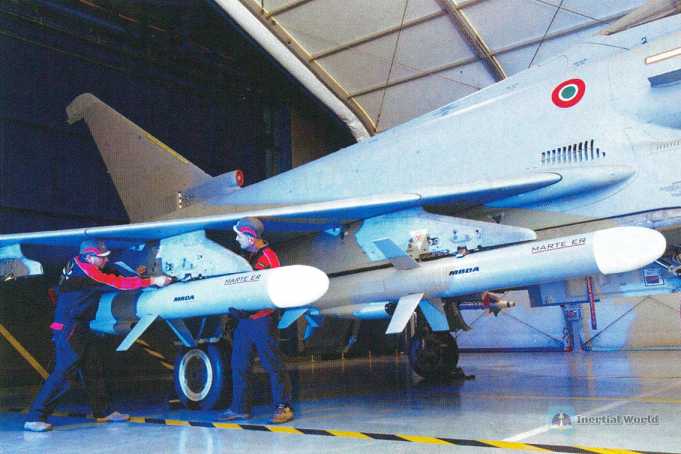
1. High hit accuracy: With the development and application of guidance technology, the strike accuracy of modern precision-guided weapons has reached the centimeter level, and some are even known as "zero-error weapons." Taking the latest improved version (Type 1A) of the US AGM-86C conventional air-launched cruise missile as an example, its hit accuracy can reach within 3 meters.
2. Long range: Compared with traditional artillery and missiles, the strike distance of precision-guided weapons has been greatly improved. For example, cruise missiles can attack targets thousands or even tens of thousands of kilometers away. Long-range attacks on targets can be carried out using land, sea, and air platforms, which expands the strike range and gives modern combat platforms a more superior range advantage.
3. Strong lethality: Precision-guided weapons are equipped with a variety of powerful warheads to deal with different types of combat targets. Conventional warheads, nuclear warheads or chemical warheads, etc., all have great explosive power and destructive efficiency, enough to cause serious damage to enemy targets.
4. Reduce the rate of collateral casualties: Precision-guided weapons use inertial guidance, terrain/image matching guidance, laser guidance and infrared guidance and other precision guidance methods in the process of performing military missions, which can guide missiles to accurately hit targets and effectively reduce the risk of accidentally injuring innocent civilians and civilian facilities during flight.
5. Helpful To achieve political goals: Precision-guided weapons have the functions of quick and effective strike and precise positioning. By accurately striking important targets, they can not only shake the enemy’s political, economic and social systems, but also play an active role in maintaining civilian facilities and protecting civilians, effectively avoiding the political risks caused by accidental injuries.
In general, precision-guided weapons have made significant changes in the form of war with their advantages of high hit accuracy, ultra-long range, excellent lethality, excellent shielding performance and high intelligence, making modern warfare more accurate, efficient and controllable.

Types of precision-guided weapons
There are many ways to classify precision-guided weapons. According to different classification methods, precision-guided weapons can be divided into different types. According to their attack targets, they can be divided into: ground attack weapons, that is, precision-guided weapons used to attack ground targets (such as ground-to-surface missiles, air-to-surface missiles); air attack weapons, that is, precision-guided weapons used to attack air targets (such as air-to-air missiles, surface-to-air missiles); anti-ship missiles, that is, precision-guided weapons used to attack ships at sea. Weapons: Anti-tank missiles, that is, precision-guided weapons used to attack tanks and other armored vehicles; precision-guided bombs, that is, bombs that can hit targets with high precision. Here is a brief introduction to several typical precision-guided weapons.

Ground-to-ground missiles
The development of ground-to-ground missiles can be traced back to World War II, when Germany focused on the development of air defense rockets and ground-to-air missiles. These research results laid the foundation for the development of precision-guided weapons in the United States, the former Soviet Union and other countries after the war. In the 1950s, the United States, the former Soviet Union and other countries successively invested in the research and development of ground-to-ground missiles, aiming to achieve precise strikes on enemy strategic targets. Since then, ground-to-ground missiles have gradually become one of the important weapons in modern warfare.
Ground-to-ground missile systems are mainly composed of four parts: missile body, launcher, positioning system and ground command center. As a weapon with a long range, the surface-to-surface missile is launched into the atmosphere through a ground launcher and eventually hits a ground target. Strategic surface-to-surface missiles are often equipped with conventional warheads or nuclear warheads. Their powerful destructive power and long-range combat capabilities are usually used to attack important enemy military bases, key government targets, and communication centers and other key facilities, thereby producing a certain deterrent effect on the enemy.
Surface-to-air missiles
Surface-to-air missiles, also known as surface-to-air missiles, began to be developed in the 1950s. At first, they were mainly used for air defense, that is, to attack high-altitude reconnaissance aircraft and bombers. Through the practice of the Vietnam War and the Middle East War, military strategists found that the importance of dealing with low-altitude penetration and electronic interference has become increasingly prominent. Therefore, countries began to focus on the research and development of medium and low-altitude surface-to-air missiles that meet the needs of field air defense and mobile force air defense, while improving the anti-electromagnetic interference capabilities of medium and high-altitude surface-to-air missile weapon systems and improving low-altitude combat performance.
Since the 1980s, ground-to-air missiles have made great progress, with low-altitude defense as the main focus. Countries around the world have equipped dozens of types of ground-to-air missiles. Among them, the most representative are the US "Patriot" and Israel’s "Iron Dome" ground-to-air missile systems. The US "Patriot" missile defense system is a low-level missile defense system in the US Tactical Ballistic Defense System (TMD). The system has fast search speed, short response time, strong tracking ability, strong anti-interference ability, can resist saturation air strikes, and can deal with multiple targets at the same time. The system is widely used to defend against enemy high-performance aircraft and tactical campaign missile attacks, and has attracted much attention in the counterattack against "Scud" ballistic missiles in the Gulf War. Israel’s "Iron Dome" system is an advanced air defense/anti-rocket interception system. The system consists of a battlefield management and weapon control system, a multi-function phased array radar, and a 20-unit launcher. The system uses radar to detect the launch and flight path of enemy rockets, and through data processing and precise calculation, predicts the target’s trajectory and guides the interceptor missile to conduct precise interception. The main targets of the Iron Dome system are short-range rockets, artillery shells and other similar weapons. According to official claims, its interception rate exceeds 90%.
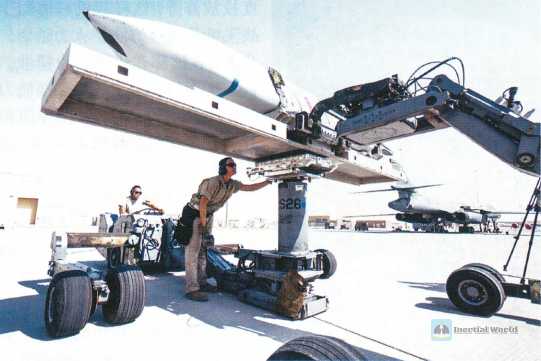

Air-to-air missiles
Air-to-air missiles are also called air-to-air missiles. As early as 1944, Germany took the lead in developing wire-guided air-to-air missiles, but they failed to be put into actual combat. After the end of World War II, the United States, Britain, France and other countries have invested in the research of air-to-air missiles. In the mid-1950s, air-to-air missiles using infrared passive guidance began to serve, and at that time they could only attack from behind the target. In the 1960s, semi-active radar-guided air-to-air missiles with all-day and all-round strike capabilities came into being.
Today, there are as many as fifty or sixty types of air-to-air missiles on the market worldwide, and more than ten are in the research and development stage. Among them, the United States has the most models, followed by Russia, France, Britain and other countries. As the core weapon of modern fighter jets, the importance of air-to-air missiles has been highlighted in recent local wars. For example, the infrared-guided American AIM-9 "Sidewinder" air-to-air missile is the world’s largest-produced air-to-air missile and one of the few missiles that have been widely used in actual combat. It was used in the 1982 Falklands Conflict and the Gulf War. At present, the "Sidewinder" air-to-air missile series has developed to the fourth generation, and its performance is constantly improving.
Air-to-ground missiles
Air-to-ground missiles are referred to as air-to-ground missiles. Since its development after World War II, it has developed to the fourth generation and is the main offensive weapon of modern strategic bombers, fighter-bombers and armed helicopters. There are many types of air-to-ground missiles with different uses. According to incomplete statistics, about 90 types have been equipped and are being developed by various countries.
Air-to-ground missiles can be divided into strategic air-to-ground missiles and tactical air-to-ground missiles according to different launch platforms. Strategic air-to-ground missiles are usually large missiles with long range and great power. For example, the Russian 305 air-to-ground missile uses advanced warhead technology and armor-piercing technology, which can destroy powerful targets such as armored steel. It has long-range strike capability and a range of hundreds of kilometers. It can strike enemy targets thousands of kilometers away. Tactical air-to-ground missiles are usually small missiles with relatively short range. They can be used to attack ground targets (such as military bases, airports, command centers, etc.) and can also be used to attack maritime targets (such as ships, maritime facilities, etc.). Air-to-ground missiles have high accuracy and strong destructive power. In modern warfare, they have become indispensable weapons and equipment for military forces such as the Air Force and the Navy.
Guided bombs
Guided bombs are a breakthrough in the development of aerial bombs. By loading guidance systems and matching aerodynamic control surfaces on ordinary aerial bombs, they become precision strike weapons. This type of weapon has the characteristics of ordinary bombs such as reliability and economy, and also has the advantages of air-to-ground missiles such as long range and high accuracy. Superior portability, efficient combat performance and reasonable cost make it the most commonly used precision-guided weapon in the world. Precision guidance makes guided bombs play a great role in improving combat effectiveness and reducing losses. It has become an essential weapon in modern warfare and is widely used in various military tasks. For example, the US JDAM precision-guided bomb has been widely used in many wars since the Gulf War.
The disadvantage of guided bombs is that they have poor day and night all-weather capabilities and require aircraft to climb to a higher altitude to drop bombs. In this way, carrier aircraft and cooperative combat aircraft are easily killed by the opponent’s air defense firepower. To this end, countries are developing new guided bombs that are more accurate, low-altitude, long-range and have all-weather combat capabilities. For example, China displayed a variety of precision-guided bombs such as Lei Shi LS-6, Lei Ting LT-2, Feiteng FT-1 and FT-3 at the 6th Air Show in 2006. These bombs use advanced guidance systems and flight control technologies to achieve precise strikes on targets and improve overall combat effectiveness.

Guided shells
Guided shells are important fire support weapons for modern artillery, which can greatly improve the accuracy and efficiency of artillery. The working principle of guided shells is similar to that of missiles. The guidance system accurately controls the flight path of the shells so that they can accurately hit the target. Guided shells are mainly divided into two categories: inertial/satellite positioning guidance and semi-active laser guidance, such as the US "Excalibur" precision-guided shells. The GP-1 laser-guided shell produced in China is also one of the excellent products. This shell is a 155mm caliber precision-guided shell with a maximum range of 20 kilometers, a hit rate of 90%, a firing rate of 2-3 rounds per minute, and can attack multiple targets. The use of guided artillery shells places high demands on combatants, requiring them to have a full understanding of the principles, operating methods and tactical applications of guided artillery shells. At the same time, the cost of guided artillery shells is relatively high, so the relationship between combat effectiveness and cost needs to be weighed in their use.

Key technologies for precision guidance
Precision guidance technology refers to the technology of using characteristic signals radiated or reflected by the target to discover, identify and track the target, and accurately guide and control the weapon to hit the target. There are many types of modern precision guidance technologies, and the more commonly used ones are the following:
Seeking guidance
Seeking guidance refers to the guidance method in which the seeker on the guided weapon receives the electromagnetic wave energy radiated or reflected by the target and automatically forms a guidance signal. The guidance system is integrated on the precision-guided weapon, and after the system is started, it can autonomously capture and lock the target. This device is often set at the front end of the precision-guided weapon, so it is also called a "seeker".
The automatic homing guidance system has rich and diverse technical paths, mainly including: microwave homing guidance, infrared automatic homing guidance, television homing guidance and millimeter wave homing guidance. At the same time, according to the source of target information acquisition, it can also be divided into active, semi-active and passive homing guidance methods. Although homing guidance has extremely high accuracy, its range of action is relatively narrow and is mostly suitable for terminal guidance.
Remote control guidance
Remote control guidance is a guidance method that uses the guidance instructions or beams issued by the guidance station to guide and control guided weapons to hit the target. With the help of an external guidance station, remote control guidance can accurately measure the distance between the target and the missile and guide precision-guided weapons to aim at the target. It can be divided into two types: command guidance and beam guidance.
In command guidance, the guidance station generates control instructions based on flight errors, transmits them to the guided weapon by wire or wireless means, adjusts its flight trajectory, and ensures that it finally hits the target. In the beam guidance system, the command station is responsible for target search and tracking, illuminating the target through radar or laser beams, and after the guided weapon enters the beam, the control equipment obtains its deviation and direction data, and corrects the weapon’s running route based on this until the target is hit.

Inertial guidance
Inertial guidance technology relies on sensors such as gyroscopes and accelerometers equipped in the missile to accurately control and monitor the heading and speed of the missile. It is one of the mainstream technologies in modern missile guidance systems. Its advantages are that it can greatly improve the guidance accuracy and reliability, and has strong anti-interference capabilities. In view of the reliability and economy of this guidance method, modern strategic missiles almost all use inertial guidance.
In addition, modern weapons such as the AGM-88 missile, which is mainly used to attack ground armored targets, the RIM-7 "Sea Sparrow missile, which is mainly used to defend against air threats, the AGM154 tactical missile, the AIM-120 interceptor missile, and even the TOW missile, which is used to directly attack enemy tanks, all use inertial guidance technology. It is expected that in the future development of missile guidance technology, inertial guidance will still occupy a pivotal position.
Infrared guidance Infrared guidance, as a passive homing technology, mainly relies on infrared detectors to capture and track the infrared heat energy spontaneously released by the target. Therefore, it is not restricted by the active activation of enemy radars and electronic equipment, whether in air defense or ground target attack. In fact, any object will emit infrared heat energy under normal conditions, which makes infrared guidance have a wide range of applications. Compared with radar guidance and other technologies, it has the characteristics of simple structure, reliable operation, low cost, anti-interference and attack concealment. In addition, infrared guidance also has high resolution and multi-target recognition capabilities, and is an important means for attacking targets with infrared radiation.
In fact, any object will emit infrared heat energy under normal conditions, which makes infrared guidance have a very wide range of applications. Compared with radar guidance and other technologies, it has the characteristics of simple structure, reliable operation, low cost, anti-interference and attack concealment. In addition, infrared guidance also has high resolution and multi-target recognition capabilities, and is an important means for attacking targets with infrared radiation.
Satellite guidance
Satellite guidance is a guidance method that uses information sent by navigation satellites to form guidance signals. This guidance method is based on the global satellite navigation and positioning system, can adapt to the use requirements in various harsh environments, and has the advantage of remote control. Satellite guidance technology can also transmit The JDAM satellite-guided bomb is a precision-guided munition that uses satellite guidance technology. It uses the satellite positioning system to transmit the target position to the weapon system, and uses the inertial measurement unit and GPS receiver to carry out precise attacks on the target. Its guidance accuracy can reach within 3 meters.
Terrain matching guidance
Terrain matching guidance system is often used to correct errors in the middle and late stages of long-range inertial guided weapons. The basic principle is: the regional feature map of the middle and rear ends of the flight route is pre-stored in the missile. When the missile passes through these areas, the real-time detection image is compared with the stored image. , observe the difference between the two and calculate the error accordingly, and the onboard computer analyzes the control instructions to adjust the direction of the missile to fly to the target along the specified route. The navigation accuracy of this system does not depend on the range length. Even with a range of thousands of kilometers, high-precision guidance can be achieved. At present, the circular probability error has reached less than 30 meters, and the error is expected to continue to decrease in the future.
Compound guidance
Guidance that combines two or more guidance methods is called compound guidance. Because each guidance method has advantages and disadvantages, if you can make up for your shortcomings, you can take advantage of it and avoid harm, and obtain higher strike accuracy. In this context, precision-guided weapons with long range and high accuracy usually use multiple guidance methods to form a composite guidance system to improve guidance accuracy and enhance anti-interference performance. For example, the French-made "Exocet" anti-ship missile adopts this strategy. It first uses inertial guidance to fly low over the sea, and then switches to radar active homing guidance when approaching the target. It became famous in the Falklands War between Britain and Argentina.
However, the composite guidance system is relatively complex, large in size and high in cost, which will reduce the reliability of the system due to the large number of components. With the advancement of science and technology, the composite guidance system is developing in the direction of miniaturization, low cost and high reliability, and it is expected that the application field will be wider in the future.
In addition to the above-mentioned guidance technologies, there are also starlight guidance, laser guidance, wired guidance, hydroacoustic guidance, etc.
Future development
The future development of precision-guided weapons has received widespread attention worldwide, and its importance in modern warfare is becoming more and more obvious. Driven by factors such as the continuous growth of military demand and the continuous reduction of collateral damage to war, precision-guided weapons in the future will continue to achieve more technological breakthroughs and promote the continuous development and innovation of precision-guided weapons. Although different types of precision-guided weapons have their own characteristics, they have a common development trend, which can be summarized as follows: hit accuracy, anti-interference capability, all-weather combat capability, continuous improvement of intelligence, and continuous reduction of production costs.

guidance
1. Hit accuracy continues to improve
With the advancement of precision-guided weapon technology, the application of emerging technologies has become an effective way to improve strike accuracy. In the field of artificial intelligence technology, according to the US "Defense News", the new SPICE glide bomb developed by Israel’s Rafael Company has significantly improved its strike accuracy after using artificial intelligence and "deep learning algorithms" to correct errors. With the help of optoelectronic terrain matching technology, ground targets can be more accurately identified and located during the falling flight. Therefore, this bomb does not need to rely on GPS, and can complete navigation only with stored digital maps. my country Aerospace Science and Industry Corporation has also successfully integrated artificial intelligence technology into the intelligent design of precision-guided missile weapons, further improving the accuracy of precision-guided weapons
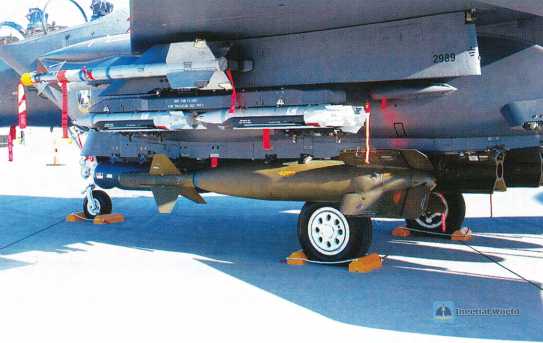
2. Anti-interference capabilities continue to increase
Anti-interference capabilities are an important trend in the future development of precision-guided weapons. Precision-guided weapons can improve their reliability and hit rate in complex battlefield environments by improving their own anti-interference capabilities. In order to ensure battlefield survivability, precision-guided weapons use advanced anti-interference technologies (such as radar anti-interference, electronic countermeasures, and infrared countermeasures) to enable them to have autonomous detection and identification capabilities, all-weather combat capabilities, etc., to effectively resist enemy interference and prevent themselves from being attacked. For example, the two new generation precision-guided weapons launched by General Atomics and Northrop Grumman Group, the "Long-Range Mobile Artillery" and the "Sea Strike" missile, adopt a composite guidance system of "inertial guidance + GPS satellite guidance + active radar terminal guidance", demonstrating its excellent ability in anti-interference.
Possess all-weather combat capability
In military operations, both sides often use complex weather conditions, such as night, fog and other adverse weather conditions to carry out raids, enhancing the concealment and suddenness of the attack. Although any guidance method has limitations, through the serialization of weapons, future precision-guided weapons will have all-weather combat capabilities. For example, the United States uses three guidance methods, namely television, infrared imaging and laser, to enable the "Maverick" air-to-ground missile to adapt to various conditions such as day, night, and bad weather, thereby improving its all-weather combat capability.

4. The degree of intelligence continues to improve
The battlefield environment of future wars is becoming more and more complex. Precision-guided weapons must be able to destroy targets in a very short time. Guided weapons must be able to distinguish different targets such as tanks, trucks, and artillery on land, different types of aircraft in the air, and different types of ships at sea. They must autonomously assess the threat of targets and attack the targets that pose the greatest threat to their own side first. For example, using the artificial intelligence technology of "image understanding", the images obtained by the detector can be compared with the images of known weapon systems stored in the database, so as to accurately identify the target, not only to distinguish between the enemy and ourselves, but also to selectively attack the target.
In the future, precision-guided weapons will carry out multi-source information fusion, quickly determine the characteristics and attributes of the target, further enhance the wide-area information perception and processing capabilities of complex battlefield environments, and improve combat effectiveness. With the development and application of intelligent technology, the intelligence of precision-guided weapons is moving towards a higher level, with self-control, self-seeking, self-selection and self-adaptation capabilities.
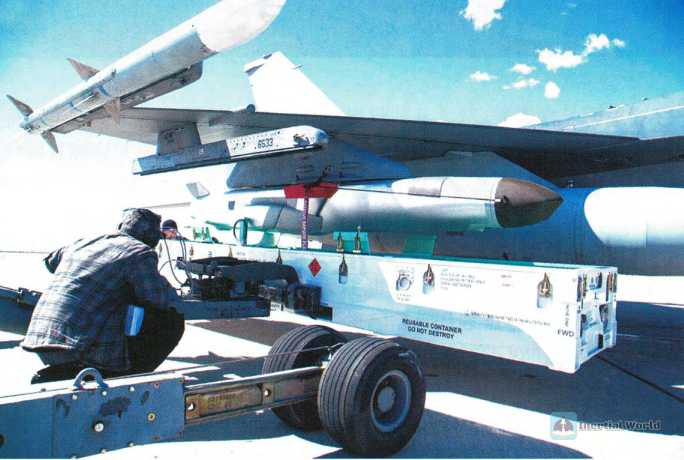
5. Production costs continue to decrease
In order to improve the accuracy and electronic countermeasure capabilities of precision-guided weapons, the guidance system has become more and more complex, which makes the cost higher and higher. However, guided weapons are all used once, and they cannot be equipped in large quantities if the cost is too high. In order to reduce costs, countries have focused on generalization and modeling in the development of precision-guided weapons, which can save development costs.
The so-called modeling is to divide precision-guided weapons into several components, each of which uses standard parts, and through different combinations, it can become precision-guided weapons for various purposes. For example, the US "Patriot" surface-to-air missile guidance system uses 24 standard digital modules, accounting for 90% of the total number of modules required. The so-called universalization means that one missile can be used for multiple purposes, which not only reduces costs but also greatly shortens the development cycle. According to statistics, a missile with two purposes can save 45% of the development cost if it is radar-guided, and 80% if it is infrared-guided. In addition, the production cost can be reduced because the production batch is increased.




